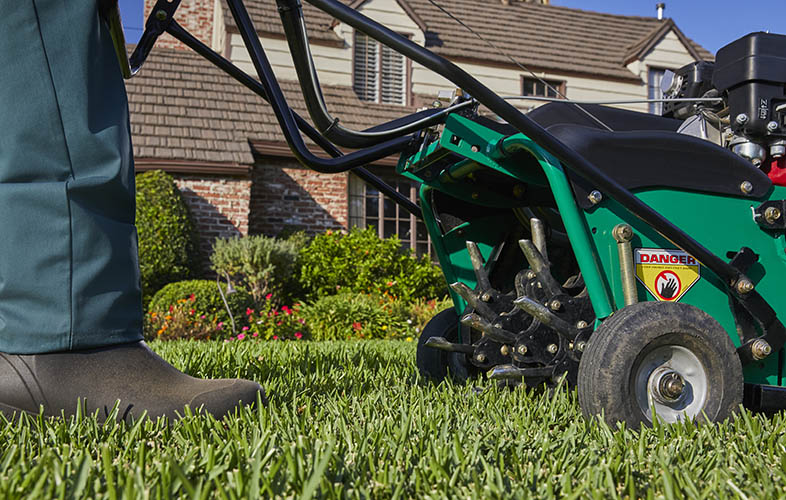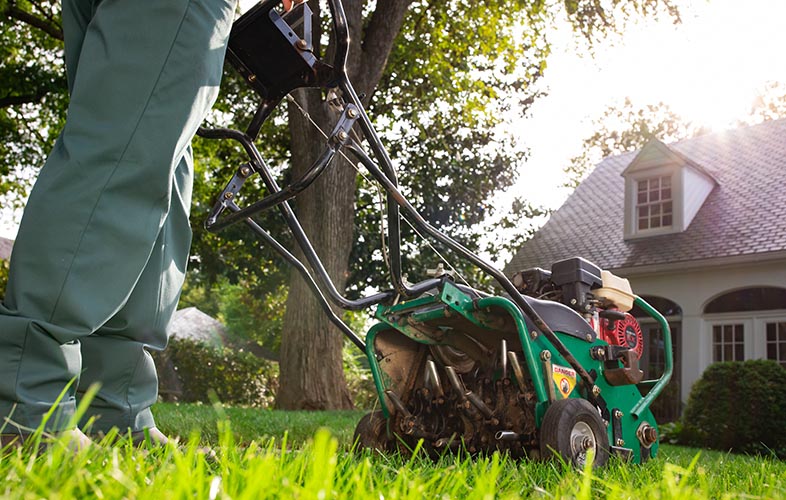No two lawns are the same, which is why TruGreen takes a tailored approach to lawn care. Instead of one-size-fits-all treatments, we look at the unique factors that affect your yard—soil type, grass variety, regional climate and even how you use your outdoor space. From there, we design a plan that addresses immediate needs and builds long-term lawn health. Our services include:
- Fertilization to give your grass the nutrients it needs to thrive, with seasonal adjustments that keep growth balanced and sustainable.
- Weed control to eliminate invasive plants and prevent them from competing with your grass for water, sunlight and nutrients.
- Insect control to protect your lawn from grubs, chinch bugs and other damaging pests before they can destroy turf and soil health.
- Aeration and overseeding to relieve soil compaction, improve turf density and promote stronger, deeper root systems
- Specialized treatments like sulfur or lime soil amendments to improve pH balance, boost soil health and increase your lawn’s overall resilience
Beyond treatments, TruGreen also focuses on preventative strategies and ongoing monitoring. With regular care designed specifically for your region, grass type and lifestyle, your lawn can better withstand challenges like drought, heavy rain or extreme foot traffic. Whether you want a yard that’s perfect for backyard barbecues, ready for kids and pets to play or simply a lush green space to enjoy, TruGreen creates a personalized plan that makes it possible.












 Back to all blogs
Back to all blogs
Facebook
X
Youtube
Copy Link
Email